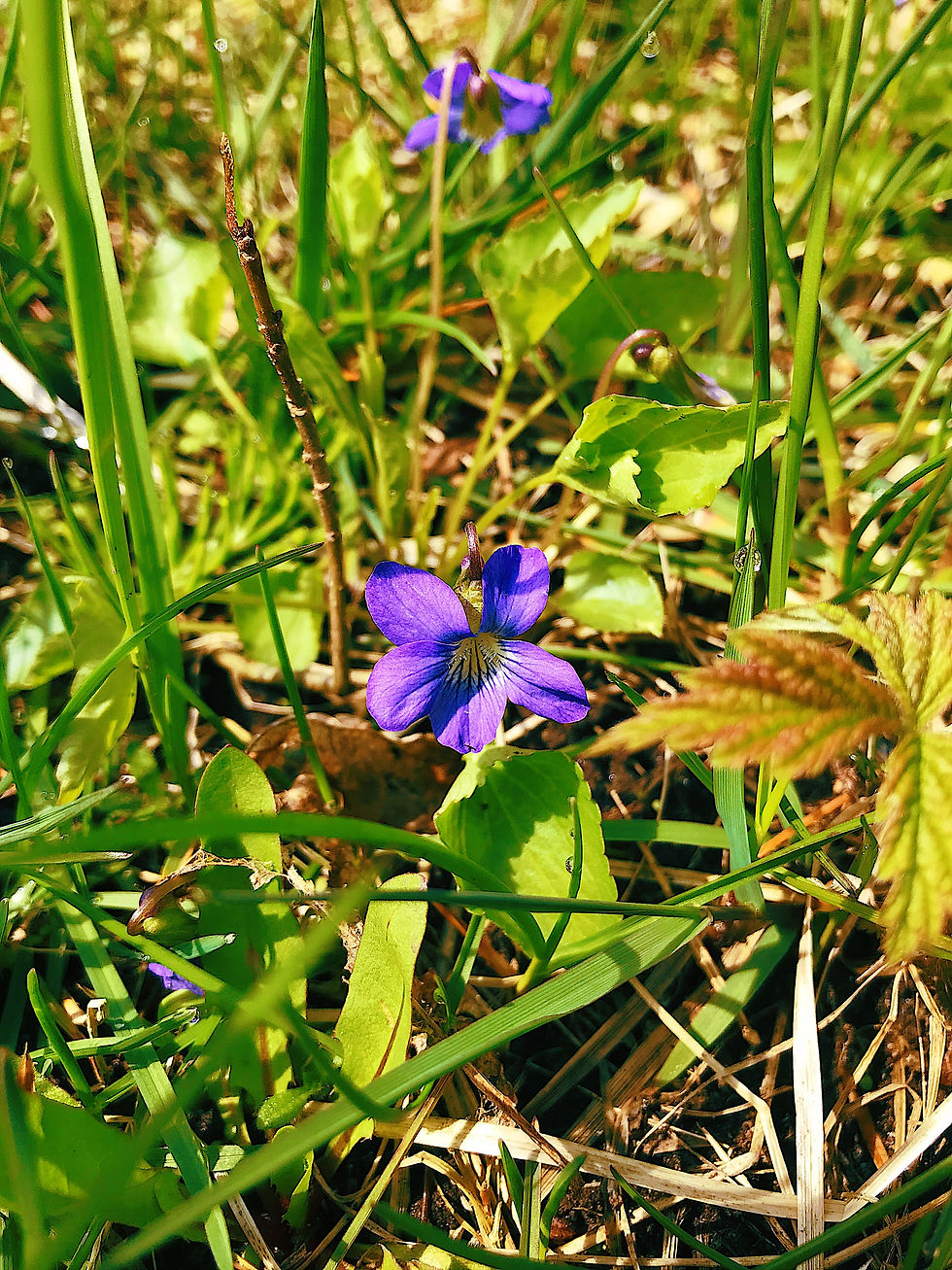Spring is an exciting time for edibles! We are so lucky to live in Ontario. You can find wild foods in your back yard, park, community and local crown land.
I don’t need science to confirm that spring edibles are packed with nutrients. They radiate the life force of Spring. Coming straight from the land – after a long and hard winter – nature provides!
Wild plants are naturally strong, healthy and adaptable. Dandelions grow through cracks of cement! Now that's some plant power I won't turn away.
It is amazing the nutrition found in a handful of dandelion leaves. Their bitter taste stimulates digestion. They are high in calcium, phosphorous, carotenes, and potassium. The leaves also contain inulin which has positive effects on our gut flora.
Before I get to the plants, it’s important to discuss the ethics that go along with foraging for wild edibles. Due to over harvesting and foraging without ethics, there are plants in Ontario that have disappeared from areas or that are seriously suffering. Wild Leeks, Chaga, Goldenseal, American Ginseng, Echinacea to name the most common ones.

Wildcrafting comes with a role of responsibility. Ensuring you are being safe & sustainable is vital.
SPRING EDIBLES
I’m a big fan of utilizing the plants commonly deemed, WEEDS or INVASIVE. Here’s a glimpse at some of my favourite, abundant, spring foods. I wouldn’t be surprised if they're growing near you!

Dandelion
A plant that forces itself on you - Everywhere I look I find dandelions. I'm sure you can too! Dandelion is a perfect example of a plant that shows up in the spring and has an array of benefits to our health, a classic spring tonic.
Delicious raw or cooked. It's as simple as adding the spring leaves to smoothies, salads or stir frys! Roasted dandelion root makes an excellent coffee substitute. With the flowers I've made wine. Dandelion flower fritters are fun along with a nutritional flower vinegar! The possibilities are endless.

Garlic Mustard
A delicious invasive! Harvesting this plant in the spring before it flowers prevents it from getting a chance to seed. Once you get it home and process it - do not compost! Hate to say it but those babies go right in the trash bag.
It's first year is spent close to the ground as a basal rosette. Shooting into a tall plant in it's 2nd year. When you find one, you'll be sure to find more.
Pestos, salads, roasted vegetables, frittatas, soups...I can keep going.
My favourite is a classic Garlic Mustard, Dandelion and Stinging Nettle Pesto...YUM
Japanese Knotweed
Another invasive you should get to know. Growing in dense patches, it's bright colours in the spring are hard to miss. You want to harvest the shoots of this plant. As it grows the stem gets woody and it's not recommended for eating.
I've enjoyed a yummy strawberry-knotweed crumble served by my wild edibles teacher. Some say knotweed is tart like rhubarb.
You can add it to other deserts, pickle them, make soups, salads, jelly, bread...and plenty more.
Spruce tips
I LOVE spruce tip harvesting season! The tips are absolutely delicious raw, pickled, added to deserts, infused in vinegar, dried for cooking and you guessed it, so much more.
They are citrusy - some can be quite sour. Go find your nearest spruce tree and give the fresh, vibrant green tips a nibble!
This year I am going to try making spruce tip ice cream for the first time. I'll check back in with how that went.
Spruce tips are a spring speciality. Grabbing a bunch to freeze and take out for Christmas baking will really wow your house guests!

Wood Violets
You can find violets covering the forest floor AND covering lawns. The gorgeous flowers make any meal or desert look elegant. I love snacking on the flowers and leaves when I'm out on the trail.
I have planted some in my garden so I can enjoy them at my fingertips. They are fun to make vinegar & honey infusions with. I've seen violet syrups and jelly.
Freezing the flowers in ice cubes makes for a deliciously-pretty addition to any summer drink.

Stinging Nettle
They say once you've met Nettle, you'll never forget it!
I harvest Nettle with gloves on - but I know people who harvest bare hands and don't get the sting. Some theories are the more you consume nettle, the less reactive you are to the sting.
Don't worry! Once the plant has been dried, chopped, cooked or froze, it looses it's sting! I've left a basket of nettle in the fridge and when I returned a few days later, the wilted plant no longer stung me.
*The spring greens are what you want as once the plant flowers, it is no longer safe to consume. An example of a plant that is important to know the right time to harvest. You can harvest more than once from nettle to prevent it from going into flower. The seeds are safe to consume - they are delicious and incredibly nutritious.
I love adding nettles to smoothies & pesto. The options are endless with nettle, just like many of the others. With the abundance of greens at this time - there's no need for a grocery store!
Have you ever eaten any of these wild plants? Share below!
Comments